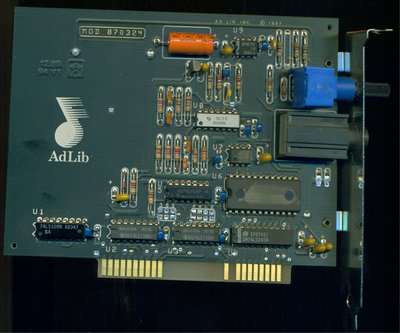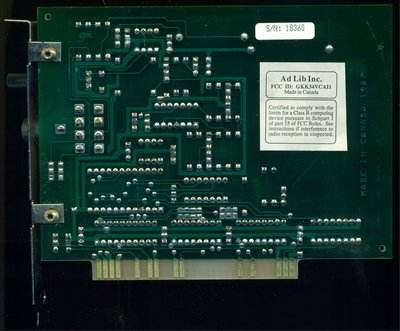First post, by crazybubba64
Hey everyone, I got this Adlib sound card a few months back from a college that was liquidating a ton of old computer parts.
I tried testing it in a machine and the computer wouldn't turn on with the card installed. I checked for continuity between the lines and there seems to be a ~16kOhm short to ground on the +5V line. I don't see many documented cases of faulty Adlib cards online.
Any ideas where to start with this? The card is in pristine condition, as it lived in a display case for most of its life, so I'm hesitant to start desoldering caps and chips.
I'm also not sure if it is genuine or not, as it seems to be a very early revision (1987) and I haven't seen many pictures online of this exact variant.
Any help or advice would be appreciated.

